Agriculture
Agriculture encompasses crop and livestock production, aquaculture, fisheries and forestry for food and non-food products. Agriculture was the key development in the rise of sedentary human civilization, whereby farming of domesticated species created food surpluses that enabled people to live in cities. While humans started gathering grains at least 105,000 years ago, nascent farmers only began planting them around 11,500 years ago. Sheep, goats, pigs and cattle were domesticated around 10,000 years ago. Plants were independently cultivated in at least 11 regions of the world. In the twentieth century, industrial agriculture based on large-scale monocultures came to dominate agricultural output.
Today, small farms produce about a third of the world’s food, but large farms are prevalent. The largest one percent of farms in the world are greater than 50 hectares and operate more than 70 percent of the world’s farmland. Nearly 40 percent of agricultural land is found on farms larger than 1,000 hectares. However, five of every six farms in the world consist of less than two hectares and take up only around 12 percent of all agricultural land. Farms and farming greatly influence rural economics and greatly shape rural society, effecting both the direct agricultural workforce and broader businesses that support the farms and farming populations.
The major agricultural products can be broadly grouped into foods, fibers, fuels, and raw materials (such as rubber). Food classes include cereals (grains), vegetables, fruits, cooking oils, meat, milk, eggs, and fungi. Global agricultural production amounts to approximately 11 billion tonnes of food, 32 million tonnes of natural fibres and 4 billion m3 of wood. However, around 14 percent of the world’s food is lost from production before reaching the retail level.
Modern agronomy, plant breeding, agrochemicals such as pesticides and fertilizers, and technological developments have sharply increased crop yields, but also contributed to ecological and environmental damage. Selective breeding and modern practices in animal husbandry have similarly increased the output of meat, but have raised concerns about animal welfare and environmental damage. Environmental issues include contributions to climate change, depletion of aquifers, deforestation, antibiotic resistance, and other agricultural pollution. Agriculture is both a cause of and sensitive to environmental degradation, such as biodiversity loss, desertification, soil degradation, and climate change, all of which can cause decreases in crop yield. Genetically modified organisms are widely used, although some countries ban them.
Crop alteration and biotechnology
Plant breeding
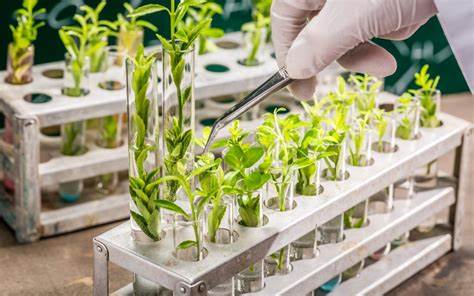 Crop alteration has been practiced by humankind for thousands of years, since the beginning of civilization. Altering crops through breeding practices changes the genetic make-up of a plant to develop crops with more beneficial characteristics for humans, for example, larger fruits or seeds, drought-tolerance, or resistance to pests. Significant advances in plant breeding ensued after the work of geneticist Gregor Mendel. His work on dominant and recessive alleles, although initially largely ignored for almost 50 years, gave plant breeders a better understanding of genetics and breeding techniques. Crop breeding includes techniques such as plant selection with desirable traits, self-pollination and cross-pollination, and molecular techniques that genetically modify the organism.
Domestication of plants has, over the centuries increased yield, improved disease resistance and drought tolerance, eased harvest and improved the taste and nutritional value of crop plants. Careful selection and breeding have had enormous effects on the characteristics of crop plants. Plant selection and breeding in the 1920s and 1930s improved pasture (grasses and clover) in New Zealand. Extensive X-ray and ultraviolet induced mutagenesis efforts (i.e. primitive genetic engineering) during the 1950s produced the modern commercial varieties of grains such as wheat, corn (maize) and barley.
Crop alteration has been practiced by humankind for thousands of years, since the beginning of civilization. Altering crops through breeding practices changes the genetic make-up of a plant to develop crops with more beneficial characteristics for humans, for example, larger fruits or seeds, drought-tolerance, or resistance to pests. Significant advances in plant breeding ensued after the work of geneticist Gregor Mendel. His work on dominant and recessive alleles, although initially largely ignored for almost 50 years, gave plant breeders a better understanding of genetics and breeding techniques. Crop breeding includes techniques such as plant selection with desirable traits, self-pollination and cross-pollination, and molecular techniques that genetically modify the organism.
Domestication of plants has, over the centuries increased yield, improved disease resistance and drought tolerance, eased harvest and improved the taste and nutritional value of crop plants. Careful selection and breeding have had enormous effects on the characteristics of crop plants. Plant selection and breeding in the 1920s and 1930s improved pasture (grasses and clover) in New Zealand. Extensive X-ray and ultraviolet induced mutagenesis efforts (i.e. primitive genetic engineering) during the 1950s produced the modern commercial varieties of grains such as wheat, corn (maize) and barley.
 The Green Revolution popularized the use of conventional hybridization to sharply increase yield by creating “high-yielding varieties”. For example, average yields of corn (maize) in the US have increased from around 2.5 tons per hectare (t/ha) (40 bushels per acre) in 1900 to about 9.4 t/ha (150 bushels per acre) in 2001.
Similarly, worldwide average wheat yields have increased from less than 1 t/ha in 1900 to more than 2.5 t/ha in 1990. South American average wheat yields are around 2 t/ha, African under 1 t/ha, and Egypt and Arabia up to 3.5 to 4 t/ha with irrigation. In contrast, the average wheat yield in countries such as France is over 8 t/ha. Variations in yields are due mainly to variation in climate, genetics, and the level of intensive farming techniques (use of fertilizers, chemical pest control, and growth control to avoid lodging).
The Green Revolution popularized the use of conventional hybridization to sharply increase yield by creating “high-yielding varieties”. For example, average yields of corn (maize) in the US have increased from around 2.5 tons per hectare (t/ha) (40 bushels per acre) in 1900 to about 9.4 t/ha (150 bushels per acre) in 2001.
Similarly, worldwide average wheat yields have increased from less than 1 t/ha in 1900 to more than 2.5 t/ha in 1990. South American average wheat yields are around 2 t/ha, African under 1 t/ha, and Egypt and Arabia up to 3.5 to 4 t/ha with irrigation. In contrast, the average wheat yield in countries such as France is over 8 t/ha. Variations in yields are due mainly to variation in climate, genetics, and the level of intensive farming techniques (use of fertilizers, chemical pest control, and growth control to avoid lodging).
Genetic engineering
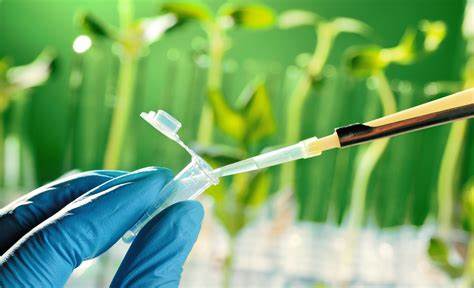 Genetically modified organisms (GMO) are organisms whose genetic material has been altered by genetic engineering techniques generally known as recombinant DNA technology. Genetic engineering has expanded the genes available to breeders to use in creating desired germlines for new crops. Increased durability, nutritional content, insect and virus resistance and herbicide tolerance are a few of the attributes bred into crops through genetic engineering. For some, GMO crops cause food safety and food labeling concerns.
Numerous countries have placed restrictions on the production, import or use of GMO foods and crops. The Biosafety Protocol, an international treaty, regulates the trade of GMOs. There is ongoing discussion regarding the labeling of foods made from GMOs, and while the EU currently requires all GMO foods to be labeled, the US does not.
Herbicide-resistant seeds have a gene implanted into their genome that allows the plants to tolerate exposure to herbicides, including glyphosate. These seeds allow the farmer to grow a crop that can be sprayed with herbicides to control weeds without harming the resistant crop. Herbicide-tolerant crops are used by farmers worldwide. With the increasing use of herbicide-tolerant crops, comes an increase in the use of glyphosate-based herbicide sprays.
Genetically modified organisms (GMO) are organisms whose genetic material has been altered by genetic engineering techniques generally known as recombinant DNA technology. Genetic engineering has expanded the genes available to breeders to use in creating desired germlines for new crops. Increased durability, nutritional content, insect and virus resistance and herbicide tolerance are a few of the attributes bred into crops through genetic engineering. For some, GMO crops cause food safety and food labeling concerns.
Numerous countries have placed restrictions on the production, import or use of GMO foods and crops. The Biosafety Protocol, an international treaty, regulates the trade of GMOs. There is ongoing discussion regarding the labeling of foods made from GMOs, and while the EU currently requires all GMO foods to be labeled, the US does not.
Herbicide-resistant seeds have a gene implanted into their genome that allows the plants to tolerate exposure to herbicides, including glyphosate. These seeds allow the farmer to grow a crop that can be sprayed with herbicides to control weeds without harming the resistant crop. Herbicide-tolerant crops are used by farmers worldwide. With the increasing use of herbicide-tolerant crops, comes an increase in the use of glyphosate-based herbicide sprays.
 In some areas glyphosate resistant weeds have developed, causing farmers to switch to other herbicides. Some studies also link widespread glyphosate usage to iron deficiencies in some crops, which is both a crop production and a nutritional quality concern, with potential economic and health implications.
Other GMO crops used by growers include insect-resistant crops, which have a gene from the soil bacterium Bacillus thuringiensis (Bt), which produces a toxin specific to insects. These crops resist damage by insects. Some believe that similar or better pest-resistance traits can be acquired through traditional breeding practices, and resistance to various pests can be gained through hybridization or cross-pollination with wild species. In some cases, wild species are the primary source of resistance traits; some tomato cultivars that have gained resistance to at least 19 diseases did so through crossing with wild populations of tomatoes.
In some areas glyphosate resistant weeds have developed, causing farmers to switch to other herbicides. Some studies also link widespread glyphosate usage to iron deficiencies in some crops, which is both a crop production and a nutritional quality concern, with potential economic and health implications.
Other GMO crops used by growers include insect-resistant crops, which have a gene from the soil bacterium Bacillus thuringiensis (Bt), which produces a toxin specific to insects. These crops resist damage by insects. Some believe that similar or better pest-resistance traits can be acquired through traditional breeding practices, and resistance to various pests can be gained through hybridization or cross-pollination with wild species. In some cases, wild species are the primary source of resistance traits; some tomato cultivars that have gained resistance to at least 19 diseases did so through crossing with wild populations of tomatoes.
Agriculture
Globally
population work in agriculture
0
%
farmers are women
0
%
million organic farmers
0
Disciplines
Agricultural science
 Agricultural science is a broad multidisciplinary field of biology that encompasses the parts of exact, natural, economic and social sciences used in the practice and understanding of agriculture. It covers topics such as agronomy, plant breeding and genetics, plant pathology, crop modelling, soil science, entomology, production techniques and improvement, study of pests and their management, and study of adverse environmental effects such as soil degradation, waste management, and bioremediation.
The scientific study of agriculture began in the 18th century, when Johann Friedrich Mayer conducted experiments on the use of gypsum (hydrated calcium sulphate) as a fertilizer. Research became more systematic when in 1843, John Lawes and Henry Gilbert began a set of long-term agronomy field experiments at Rothamsted Research Station in England; some of them, such as the Park Grass Experiment, are still running. In America, the Hatch Act of 1887 provided funding for what it was the first to call “agricultural science”, driven by farmers’ interest in fertilizers. In agricultural entomology, the USDA began to research biological control in 1881; it instituted its first large program in 1905, searching Europe and Japan for natural enemies of the spongy moth and brown-tail moth, establishing parasitoids (such as solitary wasps) and predators of both pests in the US.
Agricultural science is a broad multidisciplinary field of biology that encompasses the parts of exact, natural, economic and social sciences used in the practice and understanding of agriculture. It covers topics such as agronomy, plant breeding and genetics, plant pathology, crop modelling, soil science, entomology, production techniques and improvement, study of pests and their management, and study of adverse environmental effects such as soil degradation, waste management, and bioremediation.
The scientific study of agriculture began in the 18th century, when Johann Friedrich Mayer conducted experiments on the use of gypsum (hydrated calcium sulphate) as a fertilizer. Research became more systematic when in 1843, John Lawes and Henry Gilbert began a set of long-term agronomy field experiments at Rothamsted Research Station in England; some of them, such as the Park Grass Experiment, are still running. In America, the Hatch Act of 1887 provided funding for what it was the first to call “agricultural science”, driven by farmers’ interest in fertilizers. In agricultural entomology, the USDA began to research biological control in 1881; it instituted its first large program in 1905, searching Europe and Japan for natural enemies of the spongy moth and brown-tail moth, establishing parasitoids (such as solitary wasps) and predators of both pests in the US.
Agricultural economics
 Agricultural economics is economics as it relates to the “production, distribution and consumption of [agricultural] goods and services”. Combining agricultural production with general theories of marketing and business as a discipline of study began in the late 1800s, and grew significantly through the 20th century. Although the study of agricultural economics is relatively recent, major trends in agriculture have significantly affected national and international economies throughout history, ranging from tenant farmers and sharecropping in the post-American Civil War Southern United States to the European feudal system of manorialism.
In the United States, and elsewhere, food costs attributed to food processing, distribution, and agricultural marketing, sometimes referred to as the value chain, have risen while the costs attributed to farming have declined. This is related to the greater efficiency of farming, combined with the increased level of value addition (e.g. more highly processed products) provided by the supply chain. Market concentration has increased in the sector as well, and although the total effect of the increased market concentration is likely increased efficiency, the changes redistribute economic surplus from producers (farmers) and consumers, and may have negative implications for rural communities.
Agricultural economics is economics as it relates to the “production, distribution and consumption of [agricultural] goods and services”. Combining agricultural production with general theories of marketing and business as a discipline of study began in the late 1800s, and grew significantly through the 20th century. Although the study of agricultural economics is relatively recent, major trends in agriculture have significantly affected national and international economies throughout history, ranging from tenant farmers and sharecropping in the post-American Civil War Southern United States to the European feudal system of manorialism.
In the United States, and elsewhere, food costs attributed to food processing, distribution, and agricultural marketing, sometimes referred to as the value chain, have risen while the costs attributed to farming have declined. This is related to the greater efficiency of farming, combined with the increased level of value addition (e.g. more highly processed products) provided by the supply chain. Market concentration has increased in the sector as well, and although the total effect of the increased market concentration is likely increased efficiency, the changes redistribute economic surplus from producers (farmers) and consumers, and may have negative implications for rural communities.
 National government policies, such as taxation, subsidies, tariffs and others, can significantly change the economic marketplace for agricultural products. Since at least the 1960s, a combination of trade restrictions, exchange rate policies and subsidies have affected farmers in both the developing and the developed world. In the 1980s, non-subsidized farmers in developing countries experienced adverse effects from national policies that created artificially low global prices for farm products. Between the mid-1980s and the early 2000s, several international agreements limited agricultural tariffs, subsidies and other trade restrictions.
However, as of 2009, there was still a significant amount of policy-driven distortion in global agricultural product prices. The three agricultural products with the most trade distortion were sugar, milk and rice, mainly due to taxation. Among the oilseeds, sesame had the most taxation, but overall, feed grains and oilseeds had much lower levels of taxation than livestock products.
Since the 1980s, policy-driven distortions have decreases more among livestock products than crops during the worldwide reforms in agricultural policy. Despite this progress, certain crops, such as cotton, still see subsidies in developed countries artificially deflating global prices, causing hardship in developing countries with non-subsidized farmers. Unprocessed commodities such as corn, soybeans, and cattle are generally graded to indicate quality, affecting the price the producer receives. Commodities are generally reported by production quantities, such as volume, number or weight.
National government policies, such as taxation, subsidies, tariffs and others, can significantly change the economic marketplace for agricultural products. Since at least the 1960s, a combination of trade restrictions, exchange rate policies and subsidies have affected farmers in both the developing and the developed world. In the 1980s, non-subsidized farmers in developing countries experienced adverse effects from national policies that created artificially low global prices for farm products. Between the mid-1980s and the early 2000s, several international agreements limited agricultural tariffs, subsidies and other trade restrictions.
However, as of 2009, there was still a significant amount of policy-driven distortion in global agricultural product prices. The three agricultural products with the most trade distortion were sugar, milk and rice, mainly due to taxation. Among the oilseeds, sesame had the most taxation, but overall, feed grains and oilseeds had much lower levels of taxation than livestock products.
Since the 1980s, policy-driven distortions have decreases more among livestock products than crops during the worldwide reforms in agricultural policy. Despite this progress, certain crops, such as cotton, still see subsidies in developed countries artificially deflating global prices, causing hardship in developing countries with non-subsidized farmers. Unprocessed commodities such as corn, soybeans, and cattle are generally graded to indicate quality, affecting the price the producer receives. Commodities are generally reported by production quantities, such as volume, number or weight.


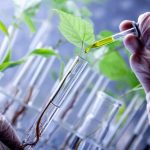

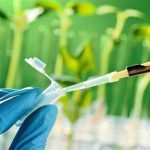

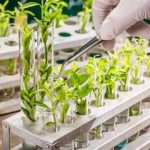
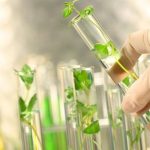

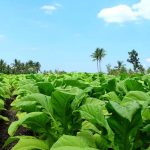

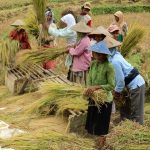

Policy
Agricultural policy is the set of government decisions and actions relating to domestic agriculture and imports of foreign agricultural products. Governments usually implement agricultural policies with the goal of achieving a specific outcome in the domestic agricultural product markets.
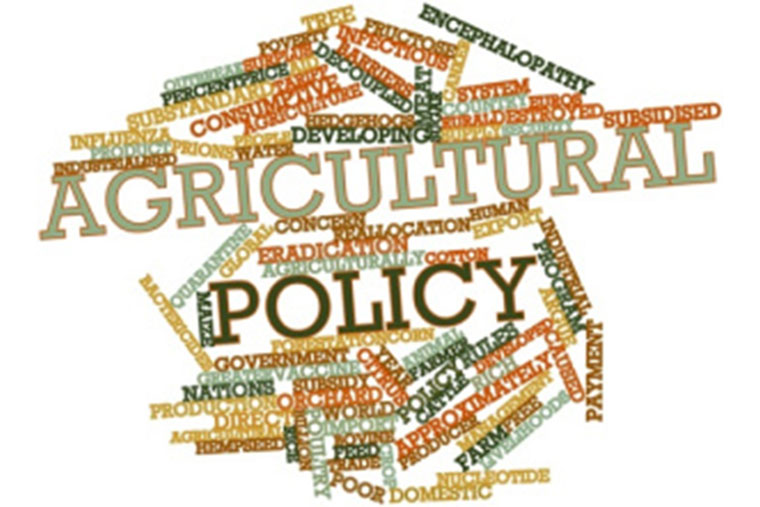 Some overarching themes include risk management and adjustment (including policies related to climate change, food safety and natural disasters), economic stability (including policies related to taxes), natural resources and environmental sustainability (especially water policy), research and development, and market access for domestic commodities (including relations with global organizations and agreements with other countries).
Agricultural policy can also touch on food quality, ensuring that the food supply is of a consistent and known quality, food security, ensuring that the food supply meets the population’s needs, and conservation. Policy programs can range from financial programs, such as subsidies, to encouraging producers to enroll in voluntary quality assurance programs.
A 2021 report finds that globally, support to agricultural producers accounts for almost US$540 billion a year. This amounts to 15 percent of total agricultural production value, and is heavily biased towards measures that are leading to inefficiency, as well as are unequally distributed and harmful for the environment and human health.
Some overarching themes include risk management and adjustment (including policies related to climate change, food safety and natural disasters), economic stability (including policies related to taxes), natural resources and environmental sustainability (especially water policy), research and development, and market access for domestic commodities (including relations with global organizations and agreements with other countries).
Agricultural policy can also touch on food quality, ensuring that the food supply is of a consistent and known quality, food security, ensuring that the food supply meets the population’s needs, and conservation. Policy programs can range from financial programs, such as subsidies, to encouraging producers to enroll in voluntary quality assurance programs.
A 2021 report finds that globally, support to agricultural producers accounts for almost US$540 billion a year. This amounts to 15 percent of total agricultural production value, and is heavily biased towards measures that are leading to inefficiency, as well as are unequally distributed and harmful for the environment and human health.
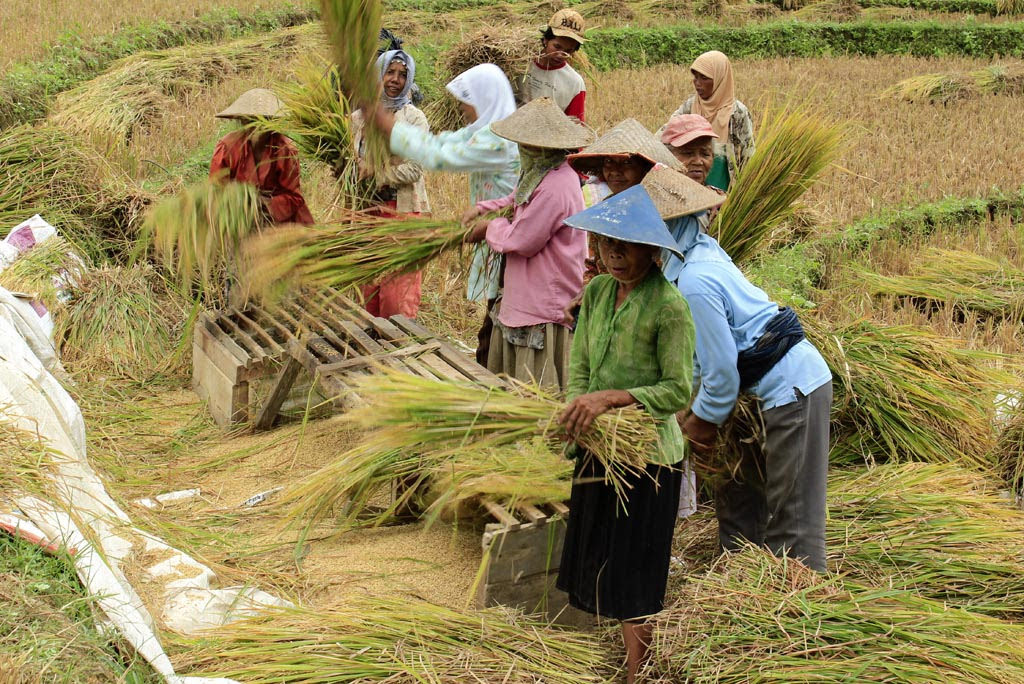 There are many influences on the creation of agricultural policy, including consumers, agribusiness, trade lobbies and other groups. Agribusiness interests hold a large amount of influence over policy making, in the form of lobbying and campaign contributions. Political action groups, including those interested in environmental issues and labor unions, also provide influence, as do lobbying organizations representing individual agricultural commodities.
The Food and Agriculture Organization of the United Nations (FAO) leads international efforts to defeat hunger and provides a forum for the negotiation of global agricultural regulations and agreements. Samuel Jutzi, director of FAO’s animal production and health division, states that lobbying by large corporations has stopped reforms that would improve human health and the environment. For example, proposals in 2010 for a voluntary code of conduct for the livestock industry that would have provided incentives for improving standards for health, and environmental regulations, such as the number of animals an area of land can support without long-term damage, were successfully defeated due to large food company pressure.
There are many influences on the creation of agricultural policy, including consumers, agribusiness, trade lobbies and other groups. Agribusiness interests hold a large amount of influence over policy making, in the form of lobbying and campaign contributions. Political action groups, including those interested in environmental issues and labor unions, also provide influence, as do lobbying organizations representing individual agricultural commodities.
The Food and Agriculture Organization of the United Nations (FAO) leads international efforts to defeat hunger and provides a forum for the negotiation of global agricultural regulations and agreements. Samuel Jutzi, director of FAO’s animal production and health division, states that lobbying by large corporations has stopped reforms that would improve human health and the environment. For example, proposals in 2010 for a voluntary code of conduct for the livestock industry that would have provided incentives for improving standards for health, and environmental regulations, such as the number of animals an area of land can support without long-term damage, were successfully defeated due to large food company pressure.
 Some overarching themes include risk management and adjustment (including policies related to climate change, food safety and natural disasters), economic stability (including policies related to taxes), natural resources and environmental sustainability (especially water policy), research and development, and market access for domestic commodities (including relations with global organizations and agreements with other countries).
Agricultural policy can also touch on food quality, ensuring that the food supply is of a consistent and known quality, food security, ensuring that the food supply meets the population’s needs, and conservation. Policy programs can range from financial programs, such as subsidies, to encouraging producers to enroll in voluntary quality assurance programs.
A 2021 report finds that globally, support to agricultural producers accounts for almost US$540 billion a year. This amounts to 15 percent of total agricultural production value, and is heavily biased towards measures that are leading to inefficiency, as well as are unequally distributed and harmful for the environment and human health.
Some overarching themes include risk management and adjustment (including policies related to climate change, food safety and natural disasters), economic stability (including policies related to taxes), natural resources and environmental sustainability (especially water policy), research and development, and market access for domestic commodities (including relations with global organizations and agreements with other countries).
Agricultural policy can also touch on food quality, ensuring that the food supply is of a consistent and known quality, food security, ensuring that the food supply meets the population’s needs, and conservation. Policy programs can range from financial programs, such as subsidies, to encouraging producers to enroll in voluntary quality assurance programs.
A 2021 report finds that globally, support to agricultural producers accounts for almost US$540 billion a year. This amounts to 15 percent of total agricultural production value, and is heavily biased towards measures that are leading to inefficiency, as well as are unequally distributed and harmful for the environment and human health.
 There are many influences on the creation of agricultural policy, including consumers, agribusiness, trade lobbies and other groups. Agribusiness interests hold a large amount of influence over policy making, in the form of lobbying and campaign contributions. Political action groups, including those interested in environmental issues and labor unions, also provide influence, as do lobbying organizations representing individual agricultural commodities.
The Food and Agriculture Organization of the United Nations (FAO) leads international efforts to defeat hunger and provides a forum for the negotiation of global agricultural regulations and agreements. Samuel Jutzi, director of FAO’s animal production and health division, states that lobbying by large corporations has stopped reforms that would improve human health and the environment. For example, proposals in 2010 for a voluntary code of conduct for the livestock industry that would have provided incentives for improving standards for health, and environmental regulations, such as the number of animals an area of land can support without long-term damage, were successfully defeated due to large food company pressure.
There are many influences on the creation of agricultural policy, including consumers, agribusiness, trade lobbies and other groups. Agribusiness interests hold a large amount of influence over policy making, in the form of lobbying and campaign contributions. Political action groups, including those interested in environmental issues and labor unions, also provide influence, as do lobbying organizations representing individual agricultural commodities.
The Food and Agriculture Organization of the United Nations (FAO) leads international efforts to defeat hunger and provides a forum for the negotiation of global agricultural regulations and agreements. Samuel Jutzi, director of FAO’s animal production and health division, states that lobbying by large corporations has stopped reforms that would improve human health and the environment. For example, proposals in 2010 for a voluntary code of conduct for the livestock industry that would have provided incentives for improving standards for health, and environmental regulations, such as the number of animals an area of land can support without long-term damage, were successfully defeated due to large food company pressure.
